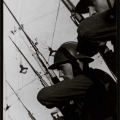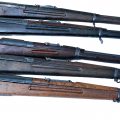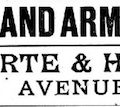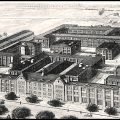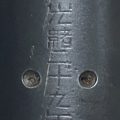
Together with my co-authors, Vernon Easley and Miles Vining, I have authored a journal article for Arms & Armour, which examines the history of the Martini rifle in Afghanistan. It addresses aspects of the cultural, martial, and commercial histories of the weapon in region, and describes the production of Martini-type rifles at the Kabul Arsenal. The abstract is reproduced below:
The Martini-Henry and other Martini-action rifles have played an important part in the cultural, martial, and commercial histories of Afghanistan. The Martini-Henry was the first purpose-designed breech-loading rifle adopted by the British military. Over the course of its lifespan, the Martini-Henry and its successors saw service in all corners of the British Empire, including Afghanistan and the neighbouring Northwest Frontier Province of British India. Afghan forces took quickly to the weapon. Copies of the Martini were produced in Afghanistan around the time of the Second Anglo-Afghan War (1878–1880), imported from Great Britain in subsequent years, and finally industrially produced at the Kabul Arsenal from 1894. These rifles helped Afghanistan’s emirs to put down rebellion and maintain control, before being turned back on the British during the Third Anglo-Afghan War of 1919. In recent years industrially-produced examples originating from Great Britain, Belgium, Austria, and from the Kabul Arsenal in Afghanistan—as well as craft-produced examples from the Khyber Pakhtunkhwa region of Pakistan—have proven popular mementos. Many of these are now held in private collections in the United States, United Kingdom, Europe, and elsewhere, often brought home by International Security Assistance Force (ISAF) troops and others who deployed to Afghanistan from 2001 onwards. Despite the popularity of Martini-type rifles purchased in Afghanistan, little has been written about the local history of these weapons. In this article, the authors aim to: present an overview of the history of the Martini-type rifle in Afghanistan; clearly articulate the models of Martini-type rifles produced in Afghanistan; explain how to identify where, when, and by whom these were made; and support their conclusions with analysis based upon a sizeable original dataset.
Continue reading: https://www.tandfonline.com/doi/full/10.1080/17416124.2020.1726605

N.R. Jenzen-Jones is an arms and munitions intelligence specialist focusing on current and recent conflicts and weapons technologies. He is the Director of Armament Research Services (ARES), the Director of Research for Headstamp Publishing, and holds Visiting Fellowships at the Centre for the Reduction of Firearms Crime, Trafficking and Terrorism at the University of Northampton, and in the School of Law, Policing and Forensics at the University of Staffordshire. He serves in consultancy roles with a number of prominent organisations in the field, and has produced extensive research and analysis on a range of small arms and light weapons (SALW) and small- and medium-calibre ammunition issues. Mr. Jenzen-Jones has also provided technical assessments of incendiary weapons, cluster munitions, indirect-fire artillery weapons, and conventional arms proliferation. He maintains a broad focus on how weapon systems are selected, acquired, stockpiled, and employed.
